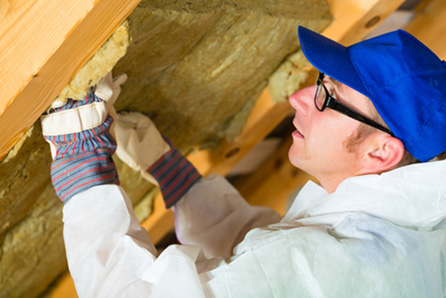An unfinished attic in a Birmingham, AL area home can have a significant effect on overall energy efficiency. Even finished attics could reduce whole-house energy efficiency if they’re not properly sealed, insulated and ventilated. Here’s a brief introduction to energy efficiency and the attic, along with what you can to do to your attic space to ensure it supports energy efficiency throughout your home.
Energy Efficiency and the Attic: What Happens?
Unfinished attics typically have at least some amount of insulation. Often, ventilation is inadequate, and air leaks may not be properly sealed. These conditions allow unfinished attics to get extremely hot in the summer when sunshine beats down on the roof. In these cases, attic temperatures of 150 degrees or more aren’t uncommon. The heat will naturally radiate into your living spaces below. Anywhere the ceiling and attic floor share common space will be susceptible to this additional heating.
When this extra heat enters the living areas, it causes the air conditioner or heat pump to work harder to compensate for that additional heat. This, in turn, causes the cooling system to work more than necessary, driving up cooling bills and causing unnecessary wear and tear on the equipment. Even if the cooling system is a high-efficiency type, it will have to work overtime to keep the indoor environment cool.
In the cooler months, if you’re running a heating system, heat can rise into the attic and escape from unsealed air leaks in the attic walls, floor or ceiling. Again, this will cause the HVAC equipment to work more than necessary, driving up monthly costs and wasting energy.
Insulation
Insulation is the most important component in the collaboration between energy efficiency and the attic. The purpose of insulation is to resist the flow of heat; in the summer, it helps keep heat out of the attic. During cooler periods, it helps keep heat inside where it does the most good.
Attics should be thoroughly insulated to prevent the accumulation of excess heat in the summer and the loss of heat in the winter. Blanket or batt style insulation should be placed between beams and joists in the attic walls, floors and ceiling. If there are irregularly shaped or hard-to-reach areas in the attic, loose fill or pellet insulation could be blown into the spaces, as could spray foam insulation that hardens when it dries. Wire mesh should be used to create cages around light fixtures or electrical features that could pose a fire risk.
The efficiency of insulation is indicated by its R-value, which indicates how well the insulation resists the flow of heat. In Alabama, it’s common to use insulation of R-30 to R-60 in uninsulated attics.
Ventilation
Ventilation can also contribute significantly to improving energy efficiency in connection with attics. A ventilation system can replace the air in the attic spaces regularly, constantly removing stale, hot air and bringing in fresh, clean air from outside. This helps keep attic areas cooler while also improving indoor air quality by removing particulates and other material.
Ventilation also helps keep attic areas dry by removing excess moisture, preventing the establishment of areas where mold can grow and insects can thrive.
Attic ventilation can be achieved by using mechanical means such as an attic fan. The fan should be capable of replacing the attic air volume at least 10 times an hour. Heat recovery and energy recovery ventilators, which help provide whole-house ventilation, are often installed in the attic, where they also help keep the attic ventilated.
Ridge vents or soffit vents provide non-mechanical ventilation that’s relatively effective. They’re installed at the highest peak of the roof and provide openings that can help move hot air out of the attic. Turbine vents, a pipe that extends above the rooftop and is capped with a turbine that spins when the wind blows, can also be used to aid attic ventilation.
Air Sealing
Air sealing consists of finding and closing holes, cracks, gaps and other openings where energy and air could escape from the attic.
Openings should be sealed with silicone caulk or another appropriate material. Caulk around window frames, chimney flashings and any penetrations in the roof or attic wall. Make sure areas behind attic insulation have been properly sealed before installing or replacing insulation.
Need professional assistance with maintaining home energy efficiency and the attic? Contact us today!



